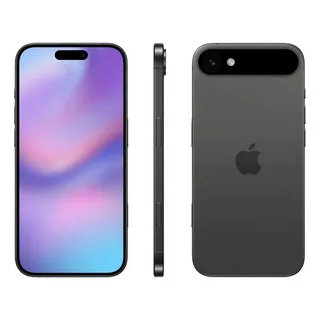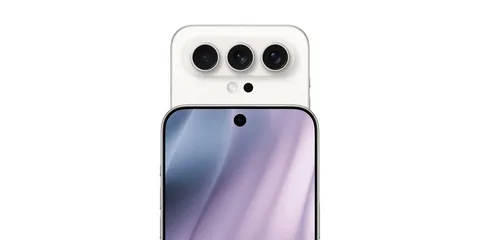The iPhone 17: Ushering in a New Era of Smartphone Technology
Anticipation is building as we await the unveiling of the iPhone 17, Apple’s latest stride in its relentless pursuit of innovation. The buzz surrounding this release is not merely about incremental upgrades but about the possibilities that could redefine how we interact with technology. With potential advancements in design, display, performance, camera systems, connectivity, and exclusive features tailored for global markets, the iPhone 17 promises to be a game-changer.
While specific details about the iPhone 17 remain under wraps, leaks and speculation paint a picture of a smartphone that could set new benchmarks across the globe. For Europe, in particular, the iPhone 17’s compatibility with regional networks, regulations, and trends will be a defining aspect of its success. Let’s dive into the possibilities and explore what the iPhone 17 might bring to the table.
An Aesthetic Evolution
Apple has a legacy of designing devices that feel like the future in your hands. For the iPhone 17, whispers suggest an even sleeker profile, potentially featuring thinner bezels and a seamless, buttonless design. The transition to a titanium chassis, combined with a matte glass back, could make the device more durable yet lightweight.
For Europe, where sustainability is becoming a key consumer priority, Apple’s rumored push toward using recycled materials could resonate deeply. The European Union’s emphasis on eco-friendly products aligns with Apple’s commitment to reducing its carbon footprint, potentially making the iPhone 17 more attractive to environmentally conscious buyers.
Sharper, Brighter, and Smarter
The iPhone 17 might showcase a cutting-edge LTPO OLED display with an adaptive refresh rate ranging from 1Hz to 120Hz, ensuring buttery-smooth visuals without draining the battery. Apple may also introduce a higher peak brightness, improving visibility under harsh sunlight—a feature that will be particularly appreciated in Europe’s varying climates, from sunny Mediterranean summers to overcast Northern skies.Rumors of microLED technology replacing traditional OLED screens hint at even better color accuracy, reduced power consumption, and greater durability. If true, this could set the iPhone 17 apart in the ever-competitive smartphone market.

Power Meets Efficiency
The iPhone 17 is expected to debut the A18 Bionic chip, built on a 3nm process. This leap in semiconductor technology promises significant improvements in speed, energy efficiency, and thermal performance. Whether it’s running resource-intensive apps or gaming, users can expect seamless multitasking without overheating concerns.
European markets, with their growing interest in mobile gaming and productivity apps, will likely benefit from this boost in performance. Moreover, Apple’s emphasis on machine learning capabilities could enhance localized features like language translation and augmented reality (AR) applications tailored to European cultures.
Beyond Photography
Apple has consistently raised the bar for smartphone photography, and the iPhone 17 is no exception. The inclusion of a periscope zoom lens could finally bring Apple into the ultra-zoom race, offering users the ability to capture distant subjects with clarity.
For content creators in Europe, from travel bloggers capturing Alpine landscapes to foodies documenting Parisian culinary delights, this feature could be revolutionary. Additionally, advanced AI-driven image processing might enhance low-light photography, ensuring every cobblestone street in Europe’s historic cities looks stunning, even at night.Video enthusiasts might also see upgrades like 8K recording and improved stabilization, making the iPhone 17 a powerhouse for creators on the go.
Seamless Integration in Europe
One of the critical areas of focus for the iPhone 17 is its connectivity. Europe’s diverse network infrastructure, ranging from rural 4G setups to cutting-edge urban 5G deployments, demands a versatile device. The iPhone 17 is expected to support Wi-Fi 7, which offers faster speeds and lower latency, making it ideal for streaming, gaming, and remote work.
Moreover, as the European Union pushes for eSIM technology, Apple’s decision to embrace eSIM-only models in some regions could gain momentum. However, this shift might face resistance in countries with slower adoption rates. The iPhone 17 must strike a balance between innovation and practicality for widespread acceptance.
EU Regulations and Universal Charger Compatibility
A significant point of interest for European consumers is Apple’s compliance with the European Union’s directive on USB-C charging ports. The iPhone 17 is expected to feature a USB-C port, marking the end of the Lightning cable era. This change will benefit users by offering faster charging speeds, enhanced data transfer rates, and the convenience of using a single cable for multiple devices.
Apple’s move to align with EU regulations could also symbolize a step toward better interoperability across devices. For frequent travelers within Europe, this shift will simplify their tech setup, reducing the need for multiple chargers and adapters.
Battery and Sustainability
Battery life remains a critical concern for smartphone users. The iPhone 17 might address this with solid-state battery technology or other advancements, providing longer usage times and faster charging. For Europe’s active population, whether commuting in London or hiking in the Swiss Alps, extended battery life is more than a convenience—it’s a necessity.
Additionally, Apple’s focus on sustainability could lead to better recycling programs and more eco-friendly packaging, aligning with Europe’s stringent environmental standards.
Innovative Features
The iPhone 17 might introduce features that feel straight out of science fiction:
- AR-Enhanced Interfaces: With Apple’s AR Glasses rumored to be on the horizon, the iPhone 17 could serve as the ultimate companion device, featuring advanced AR capabilities.
- Satellite Connectivity: Building on the emergency SOS feature, Apple may expand satellite connectivity to offer basic internet access in remote areas—a potential lifesaver for Europe’s rugged terrains.
- Health Monitoring: Enhanced sensors could bring features like blood glucose monitoring and advanced sleep tracking, appealing to Europe’s growing health-conscious demographic.
These innovations would not only elevate the user experience but also strengthen Apple’s ecosystem, enticing users to invest further in its suite of products.

Challenges for the iPhone 17 in Europe
While the iPhone 17 holds immense promise, it’s not without hurdles:
- Pricing Sensitivity: With inflation and economic uncertainties in various European countries, the high cost of flagship models might deter some buyers.
- Regional Preferences: Europe’s fragmented market means that consumer priorities vary significantly. Apple must cater to these nuances, from camera preferences in Scandinavia to rugged durability in outdoor-loving Alpine regions.
- Privacy Concerns: As data privacy remains a hot-button issue, especially in the EU, Apple’s ability to reassure users about data security will play a pivotal role in its acceptance.
What the iPhone 17 Means for Consumers
The iPhone 17 isn’t just about better specs—it’s about redefining the smartphone experience for a global audience. For Europe, in particular, its alignment with regional needs, from regulatory compliance to sustainability initiatives, could make it a standout release.
Whether you’re an avid photographer, a gamer, or someone who values seamless connectivity, the iPhone 17 promises to deliver something extraordinary. As we await its official announcement, one thing is certain: the iPhone 17 will set the stage for the next chapter in smartphone innovation.




Post Comment